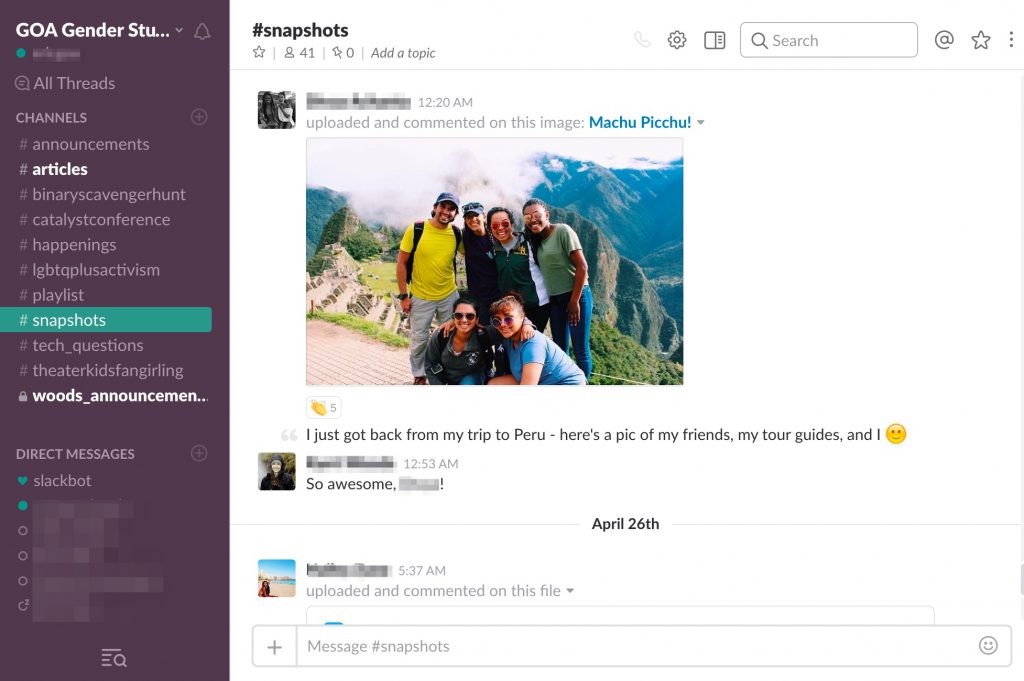Six Things I've Learned From Teachers About the Future of Education
One of my favorite times at GOA is June, when I collaborate with our second-year faculty on teacher evaluations. It’s a chance to do in-depth exploration of courses, analyze student surveys, and have detailed conversations with my colleagues about what they are learning from working with students. The process is interactive and growth-oriented: it culminates in letters I write to the teachers and their home schools tying teacher goals to my observations and assessment of their work. Most rewarding for me is hearing the on-the-ground perspectives of these educators, who are in a unique position: they are teaching concurrently in brick-and-mortar classrooms and online. Their direct contact with students at their schools and at GOA produces multi-dimensional and practical insights about how ideas about “innovative” learning methods actually work. I just finished my 2016-2017 evaluations, and I’ve been mulling six key takeaways.
1. Our best intentions as teachers might limit opportunities for students, not create them.
GOA teachers anticipate beautifully: they understand the learner experience, know where questions and challenges will arise, and design detailed instructions and plenty of checkpoints so students know exactly how to navigate. But, there’s a downside to such rigorous instructional design: it can create a culture of compliance, not exploration. Teachers found that some of their students became focused on checking boxes, locating the next task, and accumulating points rather than focusing on the learning at hand. GOA’s core competencies ask students to develop independent learning and reflection skills, and teachers and I talked about redirecting their expertise and foresight towards fostering more independence and accountability in students: instead of designing Gantt Charts, how might we design a template so students can make their own? Instead of writing out detailed instructions, how might we form powerful questions and frequent reflective activities so students develop intrinsic motivation and awareness of their learning process? Instead of planning each unit down to the last activity, how might we create space and time students to use each other as collaborators?
2. The not-so-secret ingredient to student engagement is relevance, not requirements.
Across GOA courses, students express the most excitement for, and do the best work in, activities and assessments that allow them to explore how course topics apply to the world outside of school. Over and over, teachers said the best moments in their courses were when students designed projects for GOA’s Catalyst Conference, conducted and reflected on interviews with relevant professionals, or proposed and executed an assessment of their own making.
3. Video is about connection, not instruction.
GOA faculty are less interested in preparing instructional videos that deliver content (a hallmark of the “flipped classroom” model) and more interested in how to use video for relationship-building and communication, including feedback. Teachers and their students are leveraging tools like Flipgrid, Loom, Canvas Video, video chat tools like Zoom and Skype, and mobile devices for short, informal, and personal videos. Teachers introduce units from their home school classrooms or their neighborhoods. Students record tours of their schools or their favorite local haunts. The return on the investment of time is greater: by setting the standard that video is both a routine mode of communication in the course and need not be “perfect” or “professional” in order to be shared, we see more faces and hear more voices in our courses, humanizing the online environment.

4. Feedback is about communication, not grading.
Because they don’t share space with their students, nor do they see them every day, our faculty know every interaction is precious: every email, instant message, and video chat is a new opportunity to connect. Increasingly, faculty are trying to disentangle feedback from grading by commenting on student work frequently in small bites vs. waiting days to deliver big chunks of summative feedback. This is not just good practice, it is good communication. Many teachers have set goals to use more audio and video in their feedback because students have responded positively to their initial ventures into multimedia feedback.
5. Experienced online teachers use less technology, not more.
By the end of their second year teaching for GOA, almost all of our teachers have come to the same conclusion about technology: simplify, simplify, simplify. Whereas their first year might be spent trying and learning as many new tools as possible, teachers eventually realize that focusing their time and energy on designing activities where students can choose what tools to use results in more interesting and creative work. For most teachers, they invest in using robust, versatile tools like Canvas, Google Drive, and one or two others (like Slack, which is increasing in popularity at GOA), and letting students find and use supplemental tools they are most comfortable with.
6. The currency of teaching and learning is time, not content.
In all of my evaluation meetings, not once did I hear “I wish I could cover ______.” What I heard more often was, “I wish I had time for ______.” To achieve the first five ideas here, teachers and students need time: time in the course, time in their lives. The tricky task ahead for GOA faculty is how to strike a balance between providing students with relevant content while giving them enough time to explore, make safe and important mistakes, and test new ideas. Importantly — and, I think, tellingly for the future of education — GOA faculty are comfortable with the idea of sacrificing content for skill-building, for offering students more time to best demonstrate their knowledge and practice how to take ownership of the learning process.
Global Online Academy (GOA) reimagines learning to enable students and teachers to thrive in a globally networked society. Professional learning opportunities are open to any educator. To sign up or to learn more, see our Professional Learning Opportunities for Educators or email hello@GlobalOnlineAcademy.org with the subject title “Professional Learning.” Follow us on Twitter@GOALearning. To stay up to date on GOA learning opportunities, sign up for our newsletter here.

